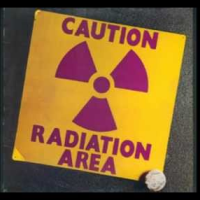Researcher Finds Declining Health Around Diablo Canyon Nuclear Plant

Is living next to a nuclear power plant bad for your health? And, conversely, could it be good for your health? Perhaps it is just benign.
Not many people argue in favor of the positive health effects, but they’ll be debating the possible deleterious ones on Thursday in the Southland's Orange County when the National Academy of Sciences (NAS) hosts a gathering of folks to discuss planning for an “Analysis Of Cancer Risks In Populations Near Nuclear Facilities.”
The Orange County Register speculated that they might discuss a study (pdf) published this month by Joseph Mangano for World Business Academy that the two Diablo Canyon nuclear reactors in San Luis Obispo “pose a health risk among those infants, children and adults living closest to the reactors.”
The right-wing, climate-change-denying Register, for whom the term “junk science” is often a synonym for “science” (2012 Editorial: Climate Data Chills Global-Warming Alarmism), asked in its story about the NAS meeting if the study was garbage. The reporter strongly implied that the answer was “yes.”
Diablo Canyon has been splitting atoms for 30 years. The recent discovery of an earthquake fault nearby has put its already shaky survival in question. The plant had 1,126 metric tons of radioactive waste on site as of December 2010 and, like all nuclear, reactors, releases a certain amount of radioactivity into the environment on an irregular basis.
The question is: How dangerous is that? In 1951, Associated Press science editor Howard W. Blakeslee attempted to put all fears to rest in a story entitled: “Atom Talk Scares Confused Public: Science Writer Tries to Clear up Some of Common Fallacies.” He wrote:
“After the New Mexico bomb, radioactive dust fell on a herd of cattle, causing hair to fall out of their backs. Some of it never grew again. But no human beings were hurt by this dust. If they got any it was brushed off in time. That bomb dropped dust in Ohio which afterward fogged some photographic film. There wasn’t any danger to human beings.”
Sixty-three years later, most scientists not employed by the nuclear power industry are pretty sure Blakeslee underplayed the danger.
Mangano’s study discovered that infant mortality rates and cancer incidence in areas around Diablo Canyon have increased dramatically. He wrote, “San Luis Obispo County has changed from a relatively low-cancer to a high-cancer county” since the plant opened in the 1980s. It rose from 0.4% below the state average to 6.9% above, the highest rate among 20 Southern California counties. Melanoma soared in the county, cancer mortality for all ages rose from 5.1% below the state average to 1.4% above.
The study said Diablo Canyon’s effects traveled. “In the 10 zip code areas in Santa Barbara County closest to Diablo Canyon, there was a greater rise in the rates of infant mortality (61.7 percent), low weight births (40.2 percent) and total mortality (19.1 percent), than in the five zip codes areas in the city of Santa Barbara, located approximately 90 miles from the reactors,” the report said.
The study also found Strontium-90 in baby teeth, which is where you might expect to find this byproduct of nuclear fission. While Cesium-137 goes after muscle and soft tissue, like the heart and reproductive organs, and Iodine-131 attacks the thyroid, Strontium attaches itself to teeth and bone. All of them present a cancer risk.
Mangano found that 50 baby teeth, mostly from San Luis Obispo but some from Santa Barbara, had Strontium-90 levels 30.8% higher than 88 baby teeth taken from around the state.
It remains to be seen if the report will get much discussion at the academy gathering this week, but it’s safe to say the nuclear power industry will ignore it. A spokesman for Diablo Canyon’s owner, Pacific Gas & Electric, told the Register, “Given Mr. Mangano’s history of discredited reports due to poor science, and that this newer report draws on the previously discredited work, PG&E is not giving this report any consideration.”
–Ken Broder
To Learn More:
Researchers Consider: How Risky Is that Radiation? (by Teri Sforza, Orange County Register)
Study: Nuclear Reactors Are Toxic to Surrounding Areas, Especially With Age (by Candice Bernd, Truthout)
Report on Health Status of Residents in San Luis Obispo and Santa Barbara Counties Living Near the Diablo Canyon Nuclear Reactors Located in Avila Beach, California (by Joseph Mangano, World Business Academy) (pdf)
- Top Stories
- Controversies
- Where is the Money Going?
- California and the Nation
- Appointments and Resignations
- Unusual News
- Latest News
- California Forbids U.S. Immigration Agents from Pretending to be Police
- California Lawmakers Urged to Strip “Self-Dealing” Tax Board of Its Duties
- Big Oil’s Grip on California
- Santa Cruz Police See Homeland Security Betrayal in Use of Gang Roundup as Cover for Immigration Raid
- Oil Companies Face Deadline to Stop Polluting California Groundwater





